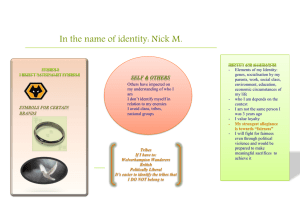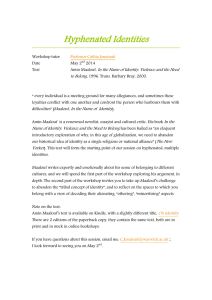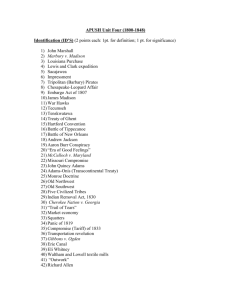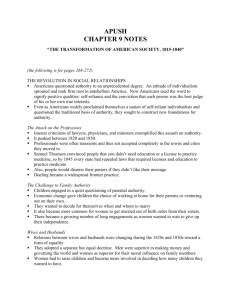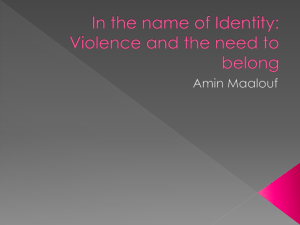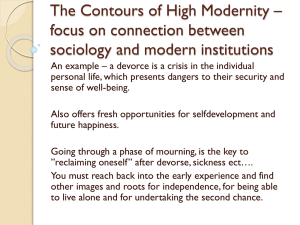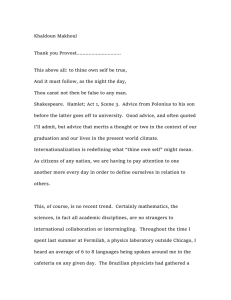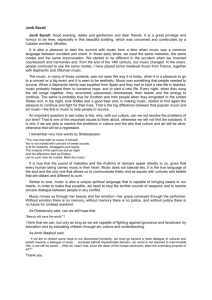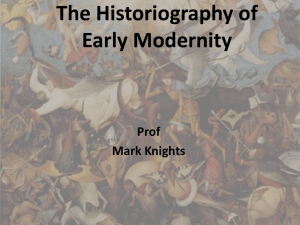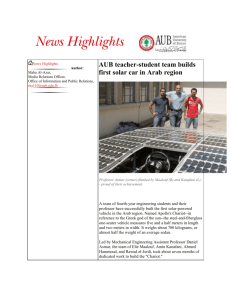+ In the name of identity Cathia Jenainati 2 May 2014
advertisement
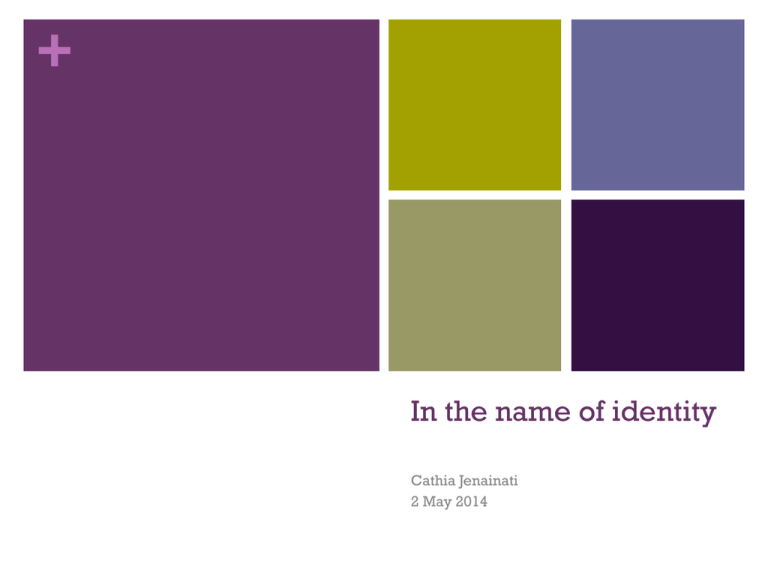
+ In the name of identity Cathia Jenainati 2 May 2014 Decoding Amin Maalouf’s + text Critique and practical implications + 1. Self and Allegiances Consider the notion that our sense of self is tied to a sense of belonging and to a set of allegiances (11). Maalouf argues: “every one of my allegiances links me to a large number of people. But the more ties I have the rarer and more particular my own identity becomes” (18). 1. Self and Allegiances Amin Maalouf advises that “it is often the way we look at other people that + imprisons them within their own narrowest allegiances. And it is also the way we look at them that may set them free” (22). 1. Self and Allegiances “what determines a person’s affiliation to a given group is essentially the influence of others … +who try to make him one of them; together with the influence of those on the other side, who do their best to exclude him” (25). Let us consider the consequences of this statement. 1. Self and Allegiances + Leading up to his argument on the “tribal concept of identity” Maalouf proposes that “there is a Mr Hyde inside each one of us. What we have to do is prevent the conditions occurring that will bring forth the monster” (28). Does this proposition make sense to you? + 1. Self and Allegiances “Before becoming an immigrant one is a migrant, an émigré” (38). How does Maalouf explain this process? + 2. Modernity and the Other According to Maalouf, what challenges does Modernity pose to our sense of identity? [62, 93] + 2. Modernity and the Other GROUP DISCUSSION: Let us examine Maalouf’s approach to doctrine. Especially his interpretation of the ways in which religion and society have influenced each other. On page 67 he writes: “too much emphasis is often laid on the influence of religions on people, and not enough on the influence of peoples and their history of religions. The influence is reciprocal, I know. Society shapes religion, and religion in its turn shapes society”. To what extent does this statement apply to your own experience of religion in your social setting? + 2. Modernity and the Other Maalouf argues that “everything in history is expressed in symbols … and above all identity” (73) how helpful is this statement in understanding the public manifestations of identity? (p120 and the section taming the panther) + On Australia Day we wear our national identity and symbols lightly. Australia Day is not an occasion for great rhetoric or formal ceremony. Mincing-machine and nationals + 3. The Age of Global Tribes “mistrust one of the keywords of our age” (97). Let us consider this statement and its consequences. + In the name of identity What is Maalouf’s ultimate vision about? Does it speak to you?
